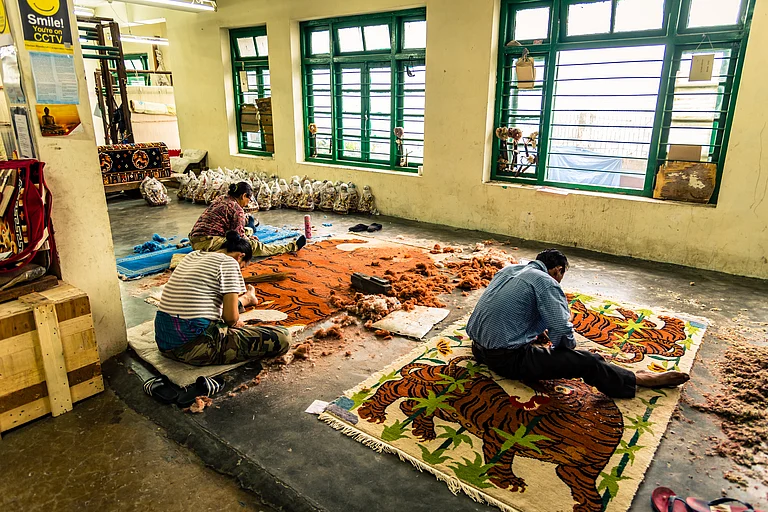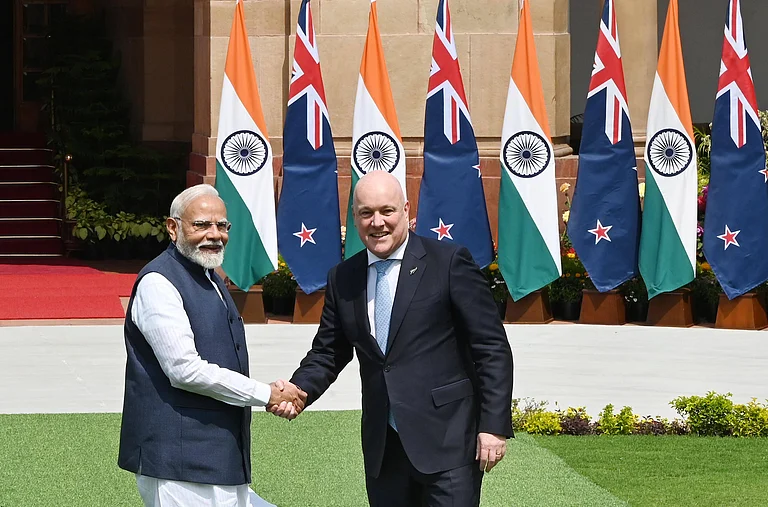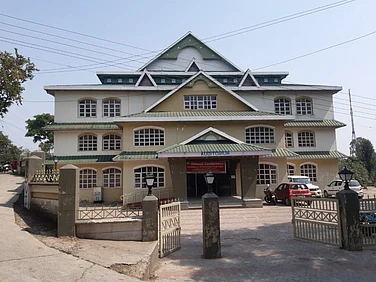The China-Tibet conflict is now in its eighth decade and the historical relationship between the two is at the core at the conflict.
While Tibetans say theirs was an independent society and they were never part of China, the Chinese say Tibet had always been a part of China.
The representatives of China and Tibet signed the 17-Point Agreement in 1951, under which China pledged to keep Tibet’s traditional government and religion in place, as per a Reuters backgrounder. This was after China had invaded Tibet in 1949-50, defeated its army, and established control over large parts of Tibetan territories.
The Tibetans accuse the Beijing of violating the agreement, which they were not comfortable with in the first place. The discontent against these violations culminated in the 1959 Tibetan uprising, which was crushed by the Chinese, forcing the Tibetan leader the 14th Dalai Lama to flee to India with a large number of followers.
Here we explain what the 17-Point Agreement was, what are the questions around it, the basis of China-Tibet conflict, and India's place in it.
The controversy over 17-Point Agreement
The complete name of the agreement was the Agreement on Measures for the Peaceful Liberation of Tibet.
It was signed after the Chinese invaded Tibet and occupied its eastern and northern parts and threatened advancing further. Naturally, they were at the negotiation table with a position of strength.
Though the Chinese claim the agreement was mutual and cordial, and though the Tibetans at the time signed it, the Tibetan government-in-exile later claimed that it was signed under duress.
While India did not outright back the Tibetan claim, a statement from New Delhi did say that at the time of negotiations that Tibetans are bound to be under duress because of the Chinese invasion and control of eastern and northern parts of Tibet.
The Indian foreign ministry told Beijing in a note in 1950, "Now that the invasion of Tibet has been ordered by Chinese government, peaceful negotiations can hardly be synchronised with it and there naturally will be fear on the part of Tibetans that negotiations will be under duress. In the present context of world events, invasion by Chinese troops of Tibet cannot but be regarded as deplorable and in the considered judgment of the Government of India, not in the interest of China or peace."
How did Chinese violate the pact
Despite their assurances, the Chinese undermined the Tibetan administration, introduced Communist Chinese policies, and increased troops in the region, according to the Tibetans.
The Communist land reforms left the region in turmoil. This led to rising discontent among Tibetans against the Chinese state, culminating in the failed 1959 uprising that forced the Tibetan leader the 14th Dalai Lama to flee to India.
The Central Tibetan Administration (CTA), which functions as the Tibetan government-in-exile from Dharamshala, Himachal Pradesh, says the Chinese violated the following points from the agreement.
The 3rd point: “The Tibetan people have the rights to exercise national regional autonomy under the unified leadership of the Central People’s Government.”
The 4th point: “The central authorities will not alter the existing political system in Tibet. The central authorities also will not alter the established status, functions and powers of the Dalai Lama. Officials of various ranks shall hold office as usual.”
The 7th point: “The religious beliefs, customs and habits of the Tibetan people shall be respected, and lama monasteries shall be protected..”
The 11th point: “The local government of Tibet should carry out reforms of its own accord, and demands for reforms raised by the people shall be settled by means of consultation with the leading personnel of Tibet.”
The Dalai Lama approved the pact "in order to save my people and country from total destruction". The CTA says he tried to abide by it until 1959 when people rose against the Chinese.
The Chinese inserted "Central Government organs" into Tibet, alleges CTA, adding that these organs "wrested all powers from the Tibetan government" with the People's Liberation Army's backing.
The communist reforms were introduced in Kham and Amdo [regions of Tibet] against the wishes of the Tibetan people, the Tibetan way of life was forcibly changed and hundreds of Tibetan religious and cultural institutions were razed to the ground, says CTA in a 2011 paper published in The Tibet Journal.
It adds, "The Tibetans reacted by taking up arms against the Chinese. Thousands of Tibetans died in skirmishes; many went to jail and were never seen again. The resistance gradually spread to central Tibet, culminating in the national uprising in Lhasa on March 10, 1959 and the escape of the Dalai Lama to India."
The basis of Tibet-China conflict
Simply put, the conflict is over the nature of the relationship between Tibet and China.
While the Tibetan government-in-exile says their homeland was never a part of China, Beijing maintains that Tibet was always an integral part of China.
Scholars maintain that the Tibet-China relationship is a complex issue, as while there is evidence for Tibet's independent conduct, this is also a fact that no foreign government recognised Tibet as an independent country, and Lhasa's relationship with Beijing has at times been understood as that of overlordship.
While the Tibetans initially called for independence, their government-in-exile and the Dalai Lama have over the years softened their position to a "middle way" approach, which would be a settlement with Beijing for a peaceful co-existence without outright independence.
India's place in China-Tibet conflict
Firstly, the biggest thorn for the Chinese is that the Dalai Lama, who they consider a separatist leader, and the Tibetan government-in-exile are based in India.
Secondly, the Indian position is complicated by the fact that Chinese territorial claims in India's Ladakh and Northeast are rooted in claims made by Lhasa prior to Chinese occupation.
Former Prime Minister Jawaharlal Nehru told Rajya Sabha in 1959: "In Premier Chou’s letter, he has referred to a telegram we received from Tibet — from Lhasa — in 1947. The point which Premier Chou has made is that even in 1947, that is, soon after we became independent, Tibet claimed territory from us. It is true that we received a telegram from the Tibetan bureau in Lhasa, which was forwarded to us by our Mission in Lhasa, claiming the return of Tibetan territory on the boundary of India and Tibet.
"A reply was sent by us demanding the assurance that it was the intention of the Tibetan government to continue relations on the existing basis until new agreements were reached on matters that either party might wish to take."
India formally accepts the One China policy, which means it accepts Tibet belongs to China. However, New Delhi has often played the "Tibet Card" and the Indian stance has hardened in recent years, particularly after the Chinese unilateral violation of all border pacts since 2020 in Eastern Ladakh.
Outlook's Seema Guha earlier wrote in an article, "The Dalai Lama is invited to official functions whenever India wants to needle China."
Earlier, there have been instances when Indian officials and ministers have been asked to keep their engagement with Tibetans in exile low-profile. That has changed since 2020.
Guha wrote for Outlook, "But since the summer of 2020 when People’s Liberation Army troops came into Ladakh and the military confrontation in Galwan, New Delhi would gradually lift the ban on official engagements with the Dalai Lama. The process is already on. Previously, Indian government officials and ministers were barred from meeting the Tibetan leader in their official capacity."
After a break of a few years, Prime Minister Narendra Modi publicly wished the Dalai Lama on his birthday last year. That was considered a major signalling from New Delhi at the time. Moreover, senior Indian politicians, including chief ministers, have lately referred to the India-China border as the Tibetan border.

























